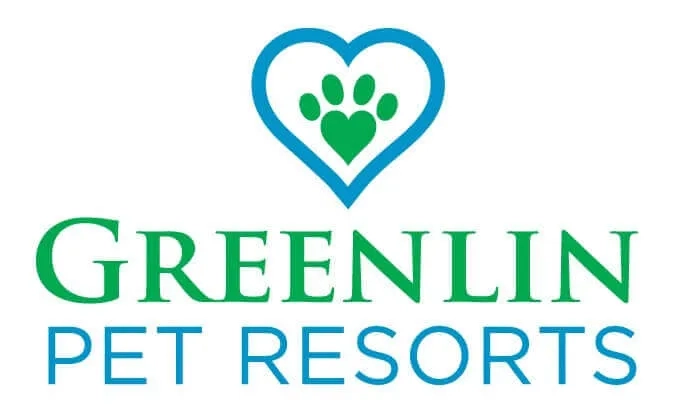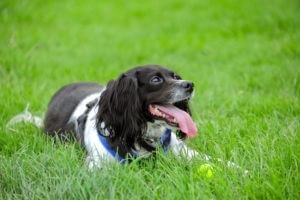How To Recognize The Signs Of Heat Stroke in Your Dog
Summer is one of the best times of the year — just ask your furry family member! Rides in the car, long walks in the park and extended time outdoors make the season a fantastic one for your pet. However, know that it can also be one of the most dangerous times of the year for people and pets.
As record high temperatures are breaking all throughout the U.S., there’s no better time than now to emphasize the dangers of prolonged heat exposure for pets. Knowing how to recognize, treat and, ultimately, prevent heat exhaustion is important for every pet owner. Read on to learn more about this very dangerous condition.
Pets Overheat As Easily As People
Hyperthermia is the medical term we most often refer to by its common name — heat exhaustion. In serious cases, this condition is also known as a “heat stroke.”
This condition occurs when your pet’s body temperature rises to a point that they are no longer able to regulate it. Because dogs pant rather than sweat to dissipate heat from their bodies, they are actually more susceptible to overheating than we are.
Noticing The Signs of Heat Stroke In Your Dog
Heat exhaustion or heat stroke is not something that occurs suddenly. Body temperature rises to dangerous levels over minutes or hours, not immediately. It is a condition that seems to occur out of the blue because we humans often don’t see or misinterpret its signs.
- Drooling — You know your pet and its drooling habits. When your dog is overheating, it will drool more than normal, and the drool will be thicker in consistency.
- Panting — Panting is a normal part of dog life. If your good girl or boy is panting rapidly and constantly, they could be too hot.
- Gum color — A dog that is experiencing higher-than-normal body temperatures may have gray, bluish, purple, or bright red gums.
- Dehydration — Check your dog’s hydration level by gently pulling up the skin between the shoulder blades. When your dog is dehydrated, the skin will “tent” and stay in place for a moment rather than quickly snap back. You can also often detect dehydration by placing a bare (clean) finger on your pet’s gums to see if they feel tacky rather than moist.
- Rapid pulse — Get to know your dog’s normal pulse rate by placing your hand on their chest near what humans would consider the armpit. Your dog’s pulse could increase remarkably if they are too hot.
- Fever — A dog’s temperature is slightly higher than ours. If your canine’s rectal temperature is above 103 F, they need to cool down immediately.
- Tremors — Muscle tremors, often appearing in waves, are a common sign of heat exhaustion.
- Dizziness — If your furry friend has difficulty walking a straight line, take their temperature immediately.
- Vomiting or diarrhea — These are both indicative of extreme heat exhaustion, especially if you notice blood in the stool.
- Weakness — If your little one has difficulty standing or seems to want to collapse, it could be heat exhaustion.
Treating Heat Exhaustion In Dogs
If you believe your dog is suffering from heat exhaustion, the first thing to do is call your veterinarian for specific advice. Next:
- Take your dog indoors to a cooler area.
- Wet your dog with cool, not cold, water. If your dog is a small breed or a puppy, use lukewarm water instead of cool. This helps to safely lower body temperature gradually.
- Blow a fan on your dog to dry them off.
- Take your dog’s temperature frequently. Once your dog has reached 103 F, stop applying water, and turn off any fans.
Many heat exhaustion situations are considered medical emergencies. In cases where your pet is collapsing, acting delirious, or experiencing seizures, it is extremely important to get your pet to an emergency medical services treatment provider as soon as possible. Your pet will need hydration from an IV, possible medication, and emergency measures to ensure their internal organs are not permanently damaged. Your pet ER will also monitor your dog for any further complications.
Heat Exhaustion Can Be Prevented
The good news about heat exhaustion, if there is any, is that it can be prevented. Follow these tips to avoid this condition in your favorite pooch.
- Do not leave your dog inside a parked car, even with the windows rolled down. This is nothing short of dangerous for your pet. In fact, Pennsylvania law allows someone to notify authorities, who may break into your car if they feel your pet is in danger.
- Make your pet take quick potty breaks when it’s extremely hot outside (above 90° F). Do not be tempted to let your pet hang out in the backyard for hours when the temps soar.
- Take walks in the early morning or late in the evening when temperatures are more comfortable. By the way, avoid hot concrete or tarmac on hot, sunny days as these may burn your pet’s sensitive pads.
- Fill up your dog’s water bowl with fresh, cool water throughout the day. Add a few ice cubes now and again for a special treat.
- Keep your house as cool as you can. If you don’t have air conditioning, consider putting a fan in each room. In extreme situations, you can periodically wet your pet’s fur with a moistened cloth to help keep their temperature regulated.
Heat exhaustion can be fatal. It seems like a hard truth to swallow, but it is the truth. The saddest part of the condition is that it is almost entirely preventable with a bit of knowledge and attention.
Remember: It’s Always a Cool Time at Greenlin Pet Resorts
Summer is also a great time for humans! Travel is in full swing, families are visiting one another and there are day trips to be had. While you may have a wonderful friend who is more than happy to come let your dog out for a potty break, don’t be tempted to leave your dog home alone for an extended period in the summer. Give your dog a vacation, too!
It’s always the perfect temperature inside Greenlin Pet Resorts. Our state-of-the-art air purification systems and all-indoor play areas keep your pet’s temperatures in safe ranges while they stay active. Highly trained staff know how to observe and monitor for signs of overheating, too, so we know how to keep pets safe even on the hottest days.
We offer vacation stays for your pet with dog boarding and puppy boarding, as well as daily doggie daycare. We want to be your pet’s home-away-from-home. You can leave town — or just take care of errands — without a care in the world knowing that our experienced, friendly, dog-loving team is looking after your treasured friend. Call any of our six locations today or contact us online. We are excited to welcome you to the Greenlin family!

